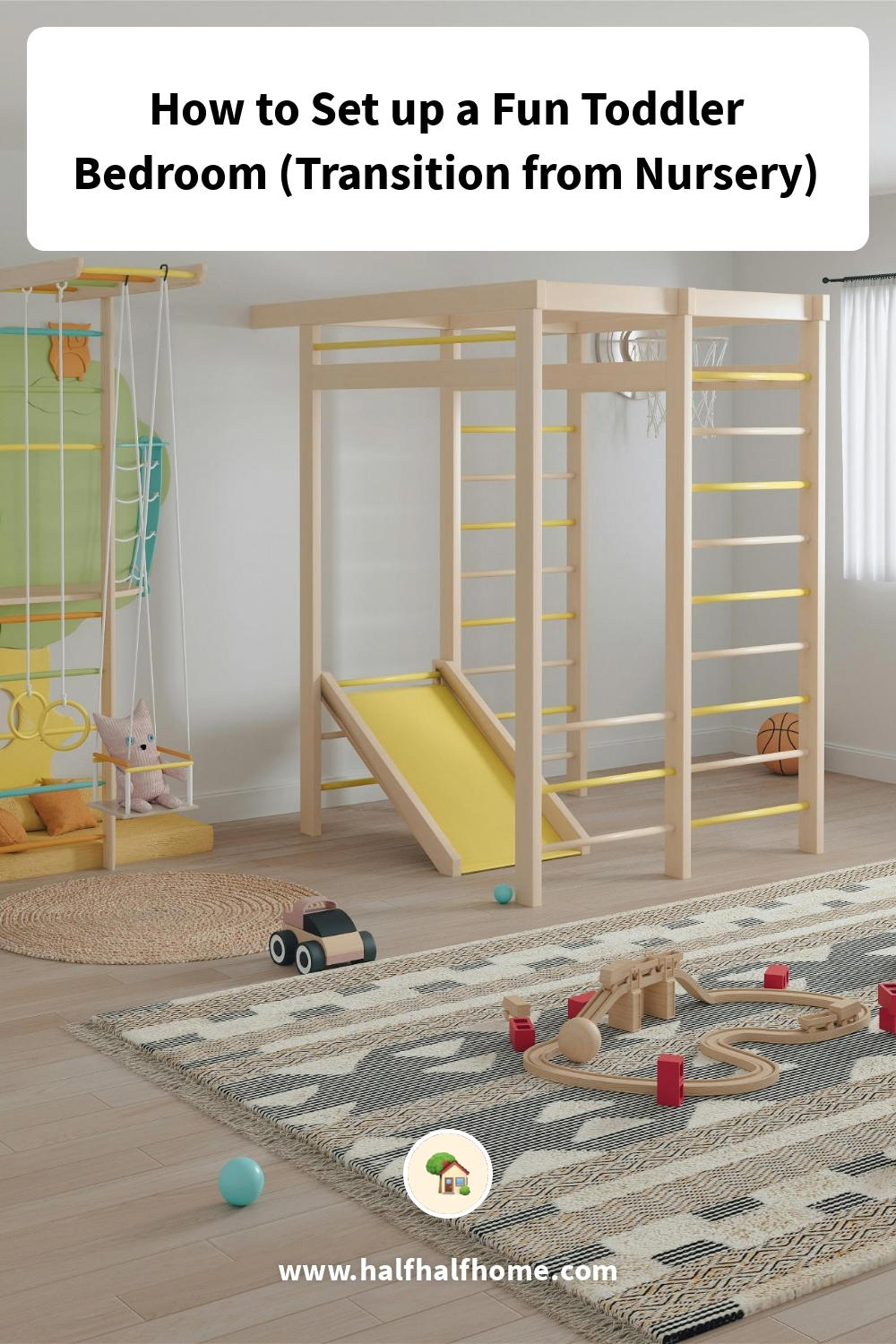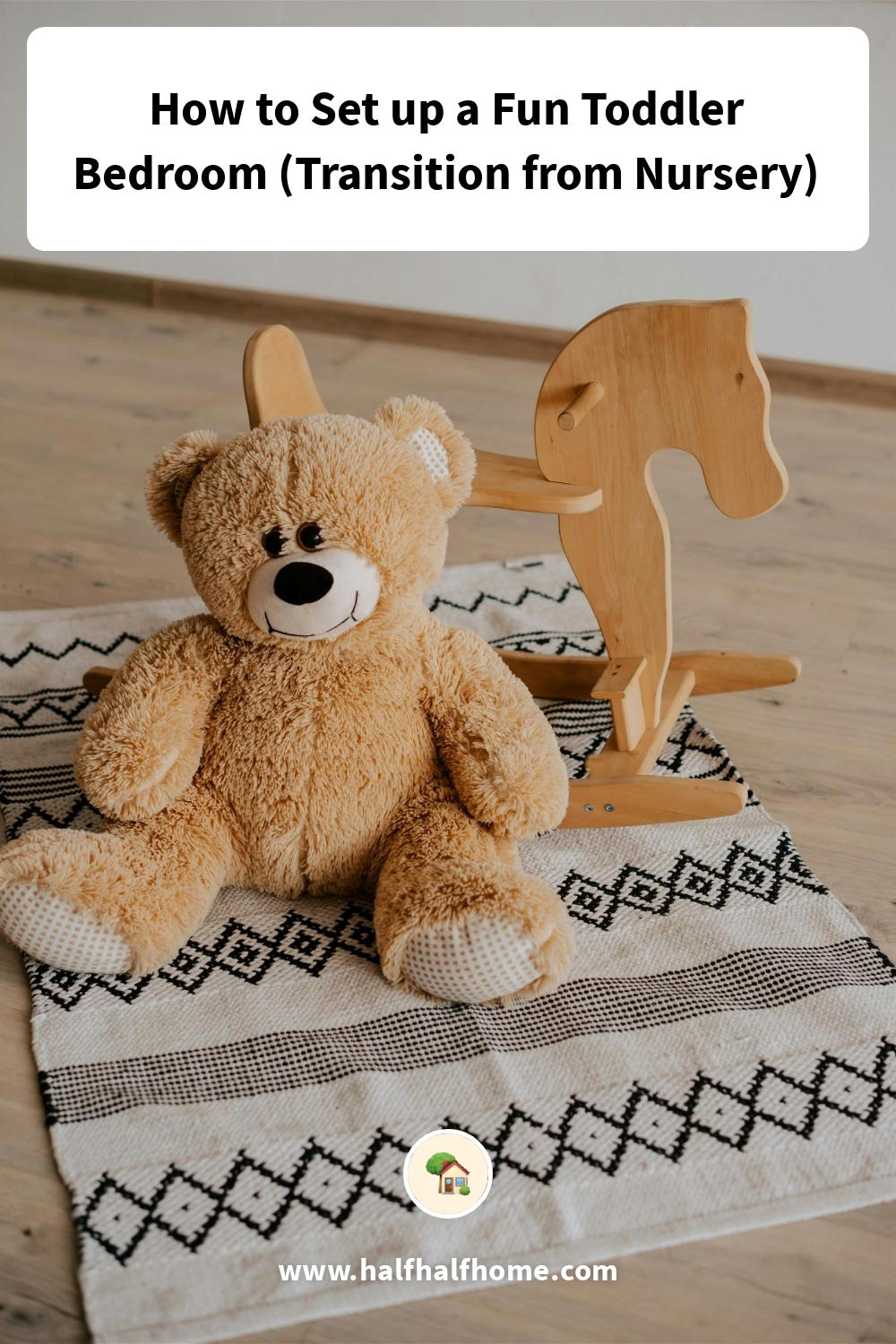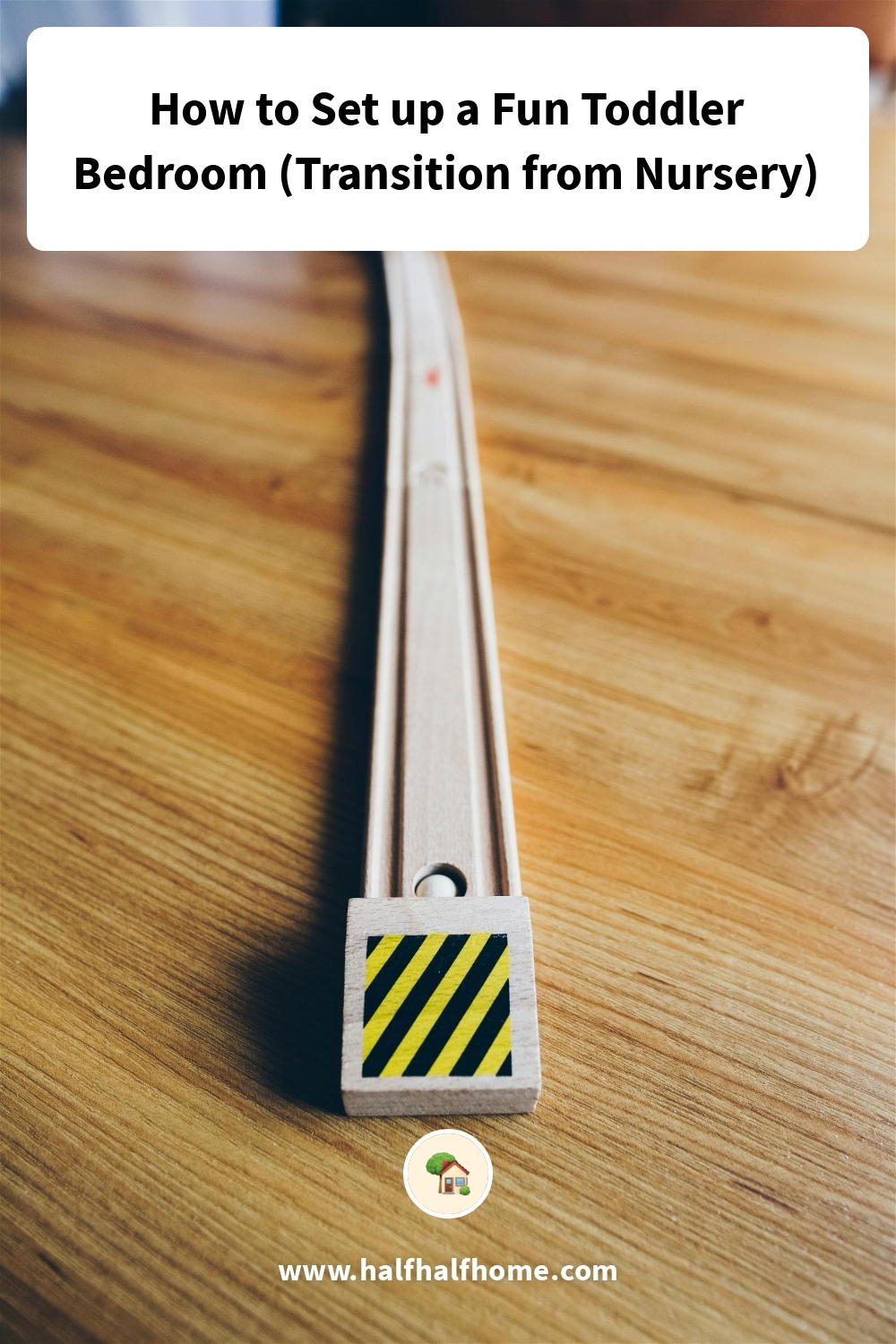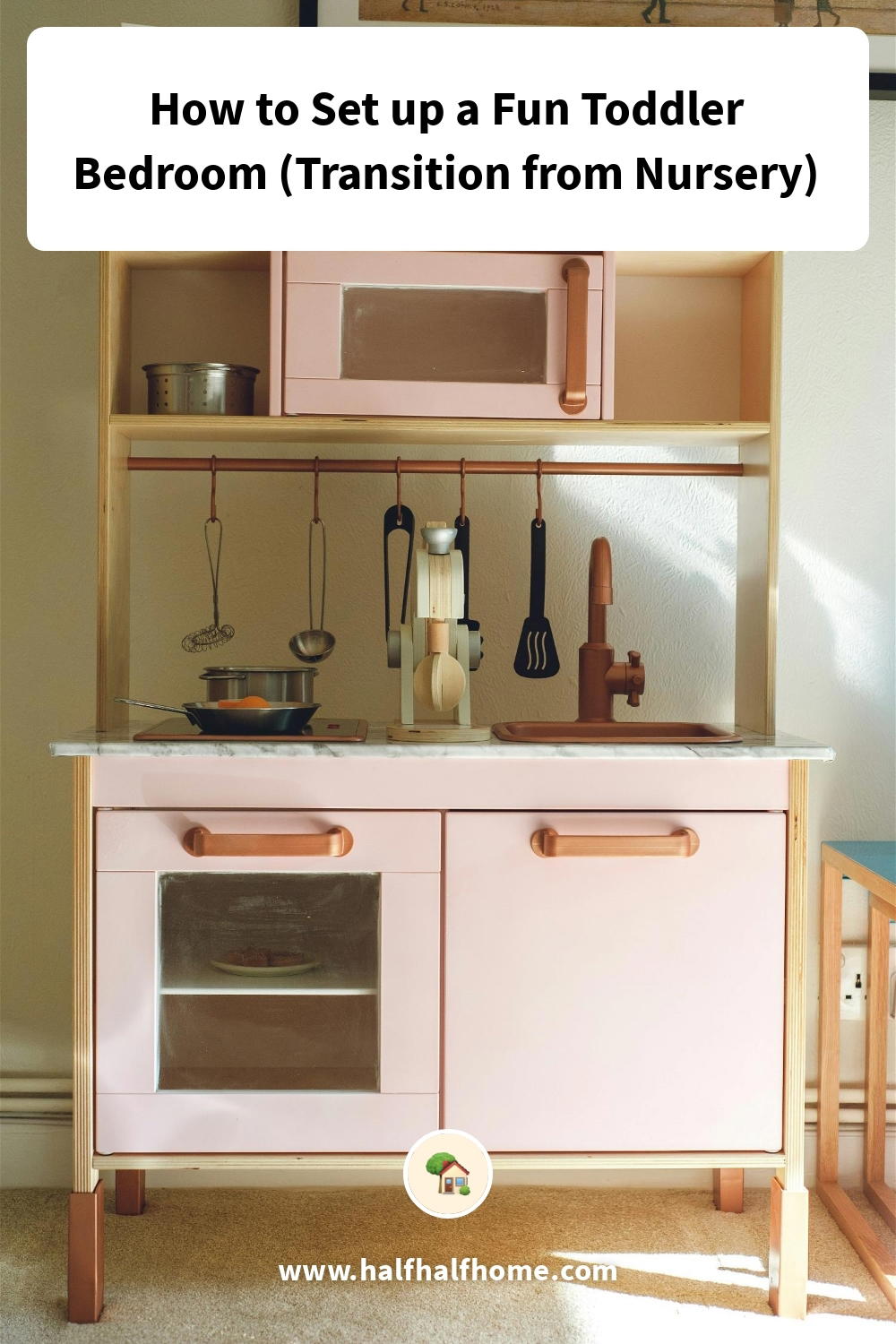How to Set up a Fun Toddler Bedroom (Transition from Nursery)
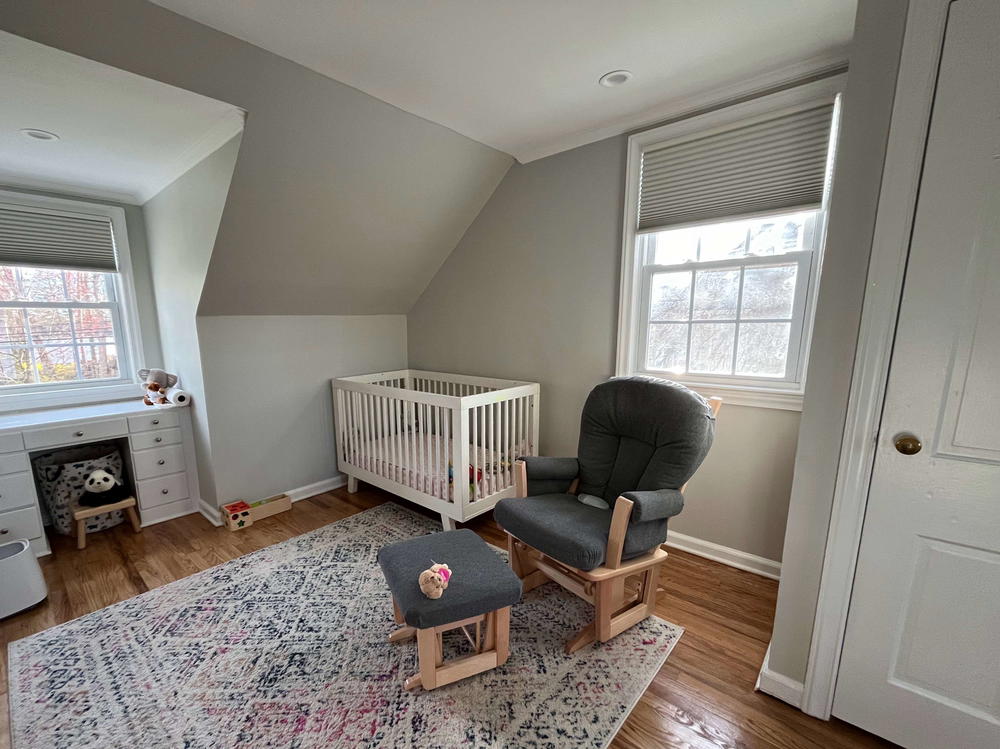
I wasn’t sure how to make our nursery into a toddler room, but figured it out! Among these tips, find how to make a toddler bedroom FUN, with ideas on what to get.
This article may contain affiliate links. We earn a small commissions when you purchase via those links — and it's free for you. It's only us (Becca & Dan) working on this website, so we value your support! Read our privacy policy and learn more about us.
When I finally had my daughter’s nursery setup down pat, I breathed a sigh of relief. It was so satisfying: her crib, changing table, bookshelf and my rocking chair all looked settled.
But then overnight, she became a toddler. She wanted to play, and roam around, and everything and anything was interesting. She knew which toys she liked, and which books she wanted to read at bedtime, and her baby bedroom was no longer a nursery.
It was time to transition to a toddler room. Luckily around this turning point, we moved to a new house and I got to set up a toddler bedroom from scratch. Here’s what I went for, and how you can transition from a nursery in these fun ways.
Quick takeaways from this list
- Add an interactive element to the room (like a slide or swing) — toddlers like to have fun!
- Get shelving with drawers, to stay tidy and to store toys, and install bookshelves at the toddler’s eye level to help them be part of choosing books to read.
- For wall deco, display your toddler’s artwork on bulletin boards.
- Use variation in lighting, like dimmers and lamps, and remember to child-proof furniture and outlets.
Add something interactive, like a toddler slide
I’m grateful that our daughter’s bedroom has the square footage to include an entire play mat area and even the special addition of a slide. I’ve seen lots of Pinterest ideas for decorating a cool toddler room with things like tents and swings.
I don’t think either of those would work for us, but I did happen on a toddler slide that I got from another mom in our local community. It was just my luck: she was getting rid of it because her kids were too big, and I was looking for a special element that I could add to our daughter’s room as she got older! I review it in my Jupiduu indoor slide review.
Having something interactive, like a swing, as another example, is a fun surprise when we have friends over (like our four- and six-year-old neighbors, who thought that a sturdy slide in her bedroom was AWESOME).
Check out the indoor toddler slide we have in our daughter’s toddler bedroom.
Get a storage shelf with drawers to pull out
We’re big into the IKEA Kallax and it’s pretty ubiquitous when it comes to decorating on a budget. Have you seen the Pinterest search about the Kallax for kids’ rooms? The ideas are far from few.
I wanted the Kallax with four pull-out “drawer” inserts so that we could stow toys away neatly. I didn’t really consider that this is also great for:
- A child to learn to pull out drawers and see what’s inside
- Learn to clean up and put toys away with ease
- Stay neat!
Basically, my objective in providing a set of toys, and more toys to discover in each drawer, was to find ways to limit screen-time for my toddler, so that we’d stay totally engaged and entertained with play.
Install a toddler-accessible bookshelf
A year before our daughter was even born, we got the IKEA BEKVÄM spice racks for our kitchen.
When we moved to a new house and our daughter was 15 months, Dan repurposed and installed them as bookcases. (The backstory is that one day I was scrolling Pinterest, saw these used as toddler bookshelves, and it dawned on me that they had a dual purpose!)
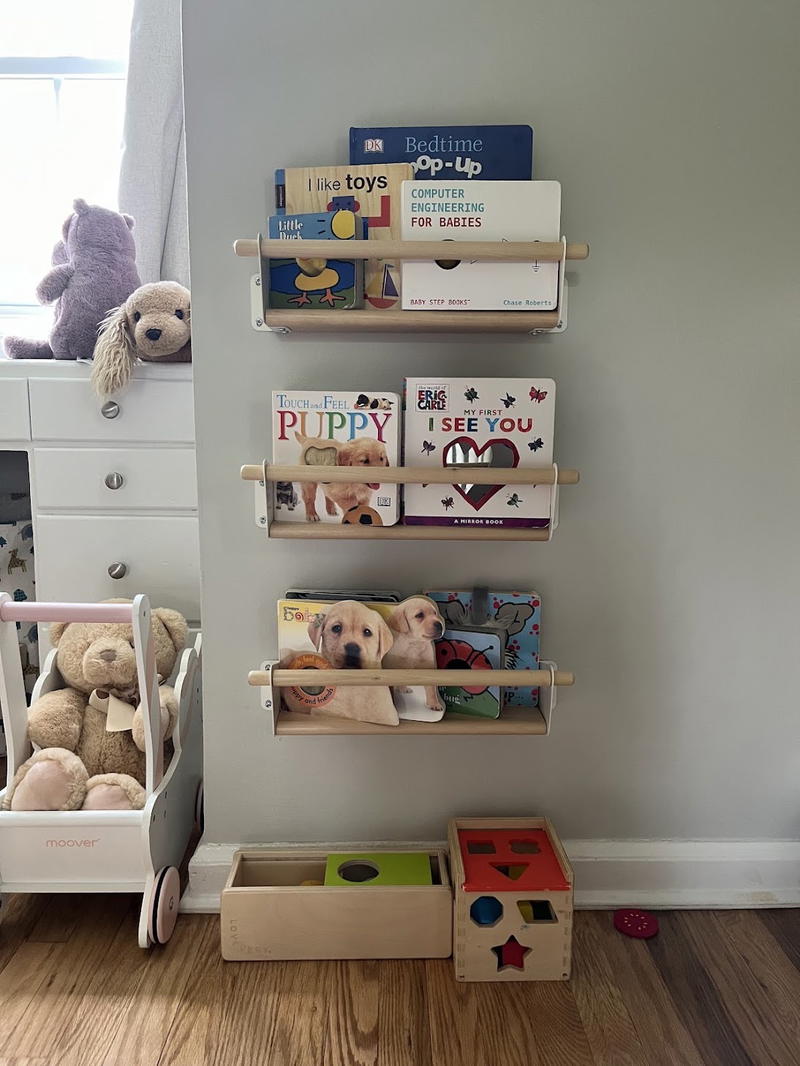
The idea is to let our toddler choose her own books, and have all the covers of the books being visible, rather than storing books in a bookshelf with only their titles showing at their bindings. So far, it has been working beautifully.
If you don’t have access to an IKEA, you can check out these shelves, from Amazon.
Put artwork on display
As our daughter gets older, we want her to be proud of her creations. There’s the fridge in the kitchen for that (like her “art” made of macaroni) and there’s also bulletin boards on the wall in the “play area” of her toddler bedroom where I can display her creative works.
When she’s a little older than she is now, we’ll point to her artwork pinned to the bulletin boards and we’ll ask, “Who made this?” “Which colors are being used here?” And we’ll hope that she’s proud and can continue being interested in artistic skills.
The bulletin boards we use are two of these white wooden frame bulletin boards, placed vertically.
Remember to toddler-proof (and baby-proof)
Toddler-proofing means keeping the room safe for how a toddler may curiously touch or get into what he or she shouldn’t. This means:
- Using outlet covers to block outlets
- Bolting furniture to the wall for safety
- Child-proofing any cabinets
- Blocking wires
- Keeping unsafe products like chemicals and medicine, out of reach
Toddler-proofing even means keeping things like diaper cream and hand sanitizer far from where your toddler can get their little hands on them. Ingesting these things like food would be a big concern.
We find that these outlet covers work great in the bedrooms.
Use variation in lighting
In our nursery, we had an overhead light (no dimmer), a floor lamp and a tiny Amazon smart lamp (that I really recommend, because it can be controlled from your phone!).
In our daughter’s toddler room, we got lucky in that three dimmable recessed lighting schemes were already set up in the new house. We use the full lighting during play, and at bedtime, I turn off every light except one, which I half-dim during pajamas and then mostly dim during reading and bedtime milk.
Even if the bedrooms in your house or apartment are not outfitted with dimmers on the recessed or track lights in the ceiling, add a lamp or even a night light. This way, you can avoid going from full light to full dark, and you can talk with your toddler about how lights can change in order to get ready for bedtime.
Add a fun play mat
Previously, we had kept a foam play mat in our apartment living room, as a place where our infant could be a part of our life, and play in the corner while we sat on the couch. We had two bins of toys there, along with her Boppy pillow, some books and a walker.
As she started becoming more mobile, the play mat didn’t serve as much function, but it’s still great for softy catching a toddling toddler when they fall. To add a pop of color and some “fun” into our child’s toddler room, voila — we added the multicolor alphabet foam mat to the “play area.”
Everything comes together in the play area because the foam mat is under the slide, and it’s under the shelving unit where sometimes a wobbling toddler falls while opening the drawers. Plus, once we get to letter recognition, we can read the letters and numbers together.


